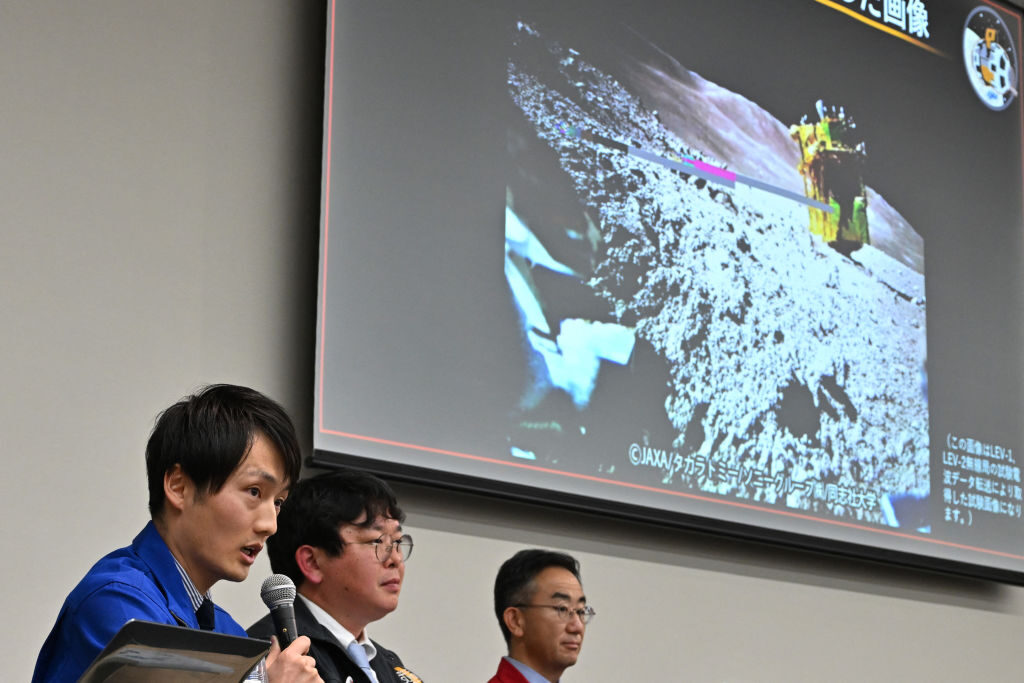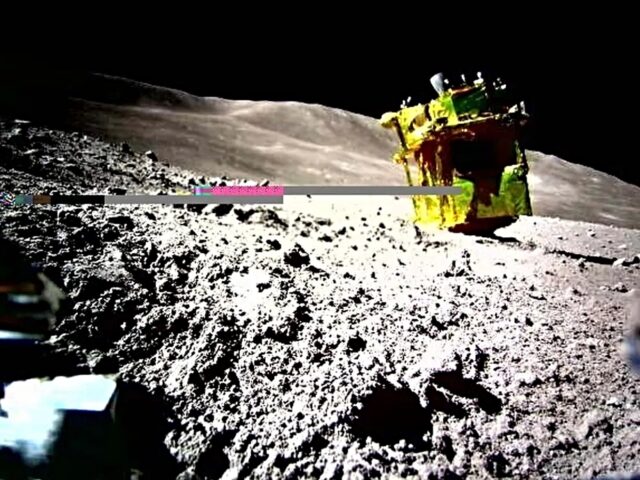Japan’s Moon lander resumed operations on Sunday some five days after it was reported to be in trouble on the lunar surface due to a lack of power.
The Japan Aerospace Exploration Agency (JAXA) said it re-established contact with the lander indicating that the glitch had been fixed.
“Communication with SLIM was successfully established last night, and operations resumed!,” JAXA said on X, formerly Twitter.
” Science observations were immediately started with the MBC, and we obtained first light for the 10-band observation. This figure shows the “toy poodle” observed in the multi-band observation,” it said, referring to the lander’s multiband spectroscopic camera.
The agency also posted on X an image shot by the probe of “toy poodle”, a rock observed near the lander.
Communication with SLIM was successfully established last night, and operations resumed! Science observations were immediately started with the MBC, and we obtained first light for the 10-band observation. This figure shows the “toy poodle” observed in the multi-band observation. pic.twitter.com/WYD4NlYDaG
— 小型月着陸実証機SLIM (@SLIM_JAXA) January 29, 2024
The lander could not could not generate power when it landed on 20 January as the solar cells pointed away from the Sun.
As Breitbart News reported, the touchdown made Japan only the fifth nation to achieve a soft lunar landing, after the United States, the Soviet Union, China and India, however it did not come without setbacks.
In the hours after the Smart Lander for Investigating Moon (SLIM) touched down, JAXA first notified it could not confirm that the lightweight craft’s solar batteries were generating power due to difficulties.

Daichi Hirnao (L), associate senior researcher at JAXA’s Space Exploration Innovation Hub Center, explains an image of the lunar surface taken and transmitted by LEV-2 “SORA-Q” the transformable lunar surface robot “SORA-Q” (operation verification model), installed on the private company’s lunar module for the Smart Lander for Investigating Moon (SLIM) missions (KAZUHIRO NOGI/AFP via Getty Images)
That has now been rectified.
Slim landed at the edge of an equatorial crater known as Shioli, within 180 ft of its target in a crater. JAXA described it as an “unprecedented pinpoint landing”.
The landing technology could allow future exploration of hilly Moon poles seen as a potential sources of fuel, water and oxygen, the agency said.
Earlier this month, a U.S. spacecraft launched by a private operator ended its lunar mission in flames over the Pacific.
In August last year, Russia’s first lunar spacecraft went into space in its first effort since 1976 when it was part of the Soviet Union.
Russia Launches First Moon Mission in Near-50 Years https://t.co/Ii7VkS82G9
— Breitbart London (@BreitbartLondon) August 11, 2023
The unmanned lunar lander subsequently crashed into the Moon after spinning out of control.
The spacecraft was scheduled to land on the south pole of the Moon, racing to land ahead of an Indian spacecraft.
The lunar south pole is of particular interest to scientists, who believe the permanently shadowed polar craters may contain water. The frozen water in the rocks could be transformed by future explorers into air and rocket fuel, AP reports.

COMMENTS
Please let us know if you're having issues with commenting.